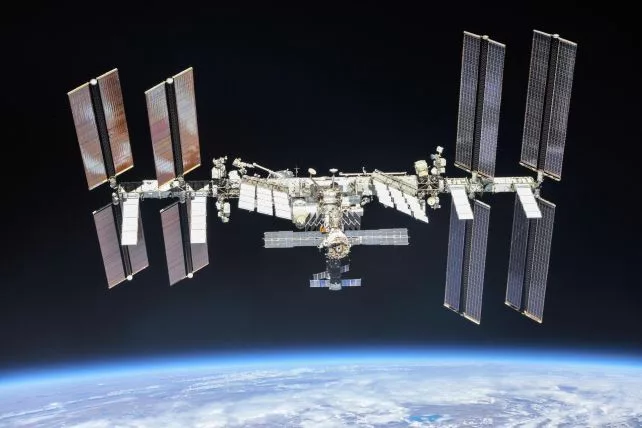The Devastating Impact of Greenhouse Gas Emissions on the Low Earth Orbit Ecosystem.
Low Earth Orbit (LEO), the region of space approximately 200 to 2000 kilometers above Earth’s surface, is an ideal location for satellites and space stations due to its proximity to Earth. However, this region faces increasingly significant challenges. In addition to space limitations, the growing number of space debris resulting from human activities poses a serious threat to the stability and functionality of orbital systems. A recent study by a team at MIT reveals a new dimension to this problem: a direct link between greenhouse gas emissions and the increased lifespan of space debris in LEO.
Low Earth Orbit: A Limited and Crowded Resource
Despite the vastness of space, the area near Earth has significant limitations. LEO, with its limited and valuable space, can only accommodate a specific number of satellites. Exceeding this capacity can lead to a chain reaction of collisions, known as the “Kessler Syndrome.” This phenomenon, resulting from collisions between satellites and space debris, leads to the production of more space debris and an uncontrolled increase in their density in LEO. Ultimately, this density can reach a point where space travel and satellite operations are completely disrupted.The thermosphere, a layer of Earth’s atmosphere at an altitude of 85 to 600 kilometers, plays a key role in determining the lifespan of satellites and space debris in LEO. This layer is influenced by various factors, including solar activity and the amount of greenhouse gases in the atmosphere. Solar activity and climate change can cause the thermosphere to expand and contract, resulting in changes in its density. An increase in greenhouse gases, especially carbon dioxide, leads to a decrease in thermospheric density. This density reduction decreases atmospheric drag on objects in LEO.
Premium TradingView account only $20 to buy, click here.
Reduced Drag: Longer Lifespan of Space Debris
The reduction in atmospheric drag has a significant impact on objects in LEO. For operational satellites, reduced drag can be beneficial, as it reduces the need for constant altitude adjustments. However, for space debris, this means an increased lifespan in orbit. Space debris typically slowly falls towards Earth due to atmospheric drag and eventually burns up in the atmosphere. With reduced drag, this process becomes significantly longer, and the debris remains in orbit for a much longer time.MIT researchers used computer models to simulate the impact of various greenhouse gas emission scenarios on thermospheric density and, consequently, the lifespan of space debris in LEO. The results show that in scenarios with medium to high carbon dioxide emissions, the number of satellites naturally deorbiting significantly decreases. This leads to an increase in the density of space debris and, consequently, further limitations on launching new satellites.
The Risk of Kessler Syndrome
In the worst-case scenario predicted, by 2100, the capacity of LEO at altitudes of 400 to 1000 kilometers will decrease by 60% during periods of maximum solar activity and by 82% during periods of minimum solar activity. While the critical point of Kessler Syndrome has not yet been reached, this risk increases significantly with the ever-increasing number of satellites in orbit.The MIT study emphasizes that understanding the interaction between climate change and the increase in space debris on the stability of LEO is vital. This research serves as a warning to the international community and highlights the need for global cooperation to reduce greenhouse gas emissions and develop international laws and regulations for managing space debris. Without immediate and coordinated action, the likelihood of Kessler Syndrome and the jeopardizing of space activities in the near future will increase. Innovative plans for cleaning up Earth’s orbit from space debris and developing advanced technologies to reduce space debris production are among the essential solutions to address this challenge. This issue is not merely an environmental problem but also relates to space security and the space economy.
The Growing Threat of Orbital Debris
The sheer volume of defunct satellites and rocket stages currently orbiting Earth is a significant contributor to the growing debris field. These objects, traveling at incredibly high speeds, pose a considerable threat to operational satellites and future space missions. The cumulative impact of numerous small pieces of debris is just as dangerous as larger objects. Even micrometer-sized debris can cause significant damage to spacecraft. Mitigation strategies must address both the prevention of new debris and the removal of existing debris. This includes developing standardized design practices for satellites that ensure controlled de-orbiting at the end of their lifespan. Furthermore, research into and development of advanced technologies for actively removing existing debris from orbit is essential. This could involve robotic missions designed to capture and remove large pieces of debris, or using lasers to de-orbit smaller fragments.The interconnectedness of this issue highlights the need for a holistic approach. The impact of greenhouse gases on the thermosphere indirectly contributes to the problem, underscoring the importance of addressing climate change as well as the space debris issue itself. A multi-faceted strategy requires international cooperation, technological innovation, and a long-term commitment to sustainable space practices. Failure to act decisively will have profound and far-reaching consequences for the future of space exploration and utilization.





Post Comment